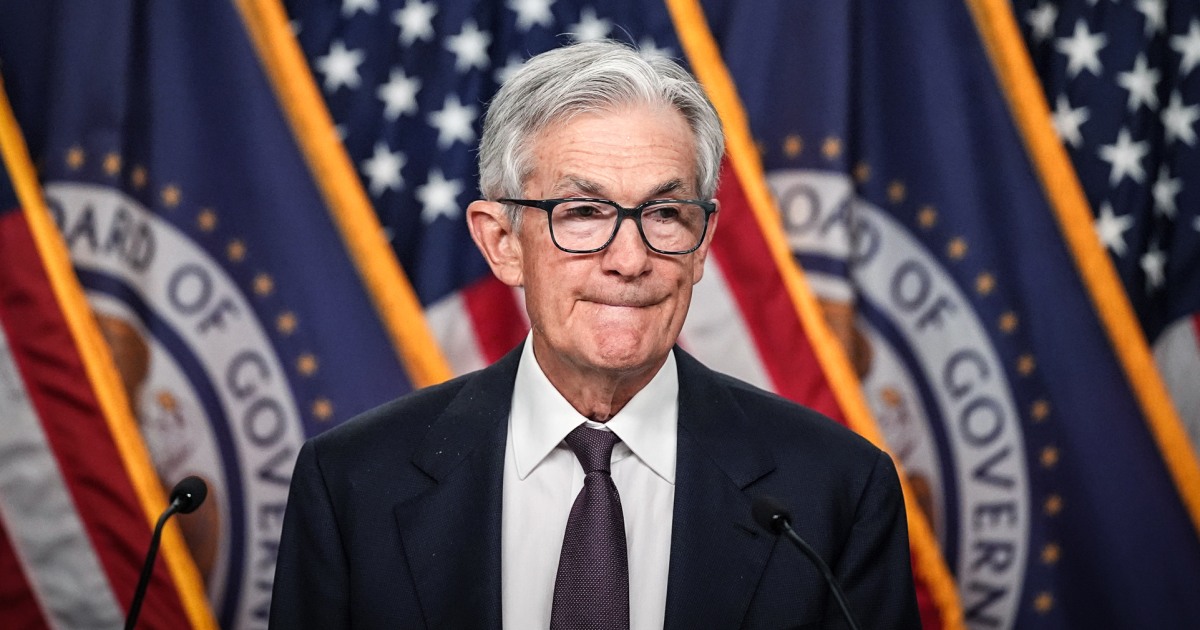
The Federal Reserve is holding interest rates steady as it navigates uncertainty kicked up by a president who keeps haranguing the central bank to lower them.“‘Too Late’ Jerome Powell is a FOOL, who doesn’t have a clue,” President Donald Trump posted on his Truth Social platform Friday morning, renewing a long-running barrage of insults against the central bank chair. “Other than that, I like him very much!” he added.The president’s public pressure campaign on the Fed comes as the central bank faces an ironic, whiplash-inducing reversal.Just months ago, it was on the verge of a rare feat — wrestling down a historic run-up of inflation without triggering mass layoffs, known as a “soft landing” — and preparing to keep cutting borrowing costs. But Trump’s rapid upending of global trade has pushed the Fed and its leader into a difficult position, in which they feel a wait-and-see approach may be their best strategy for now.“The Fed has been plunged into an almost impossible situation whereby its two mandates will likely move in opposite directions,” said Seema Shah, chief global strategist at Principal Asset Management, referring to the Fed’s dual mission of keeping employment high and inflation low. “But government policy — which is incredibly uncertain itself — will dictate both the timing and magnitudes of those moves,” she wrote in a note to clients Wednesday.The concern is that an economy damaged by tariffs will force the Fed to cut interest rates to stave off job losses, at the risk of driving inflation higher. After having peaked above 9% in mid-2022, the annual inflation rate has been hovering just north of the central bank’s 2% target for nearly a year. Powell said Wednesday that holding pat on rates allows the Fed to “wait and see” how the economy unfolds. But policymakers warned in their statement Wednesday that “the risks of higher unemployment and higher inflation have risen,” renewing concerns about “stagflation” — a situation in which job losses and price hikes both mount even as the economy lags.“The tariff shock will reduce real GDP growth and raise prices at the same time, putting the Fed on the horns of a dilemma,” Brian Coulton, chief economist at Fitch Ratings, warned in a note Wednesday afternoon. “The policy move necessary to maintain full employment is the opposite of that necessary to contain inflation. Moving one policy lever to hit two conflicting targets is problematic.”Politics are adding to the difficulty. Trump has broken long-standing norms against political influence over monetary policy by repeatedly bashing Powell, whom he appointed in 2018. The president’s fresh criticism Friday follows weeks of escalating attacks.“CUT INTEREST RATES, JEROME, AND STOP PLAYING POLITICS!” he wrote on Truth Social on April 4. Two weeks later, he posted again, nicknaming Powell “Too Late” and saying his “termination cannot come fast enough!” In yet another post a week later, Trump called Powell a “major loser.”Powell told reporters Wednesday that Trump’s comments had no impact.“It really doesn’t affect either our job or the way we do it,” he said, adding that neither has he asked for a meeting with Trump nor has the president requested one. President Joe Biden reappointed Powell in 2022, and despite the recent barrage of criticism, Trump told NBC News’ Kristen Welker last week that he wouldn’t seek to remove him before his term ends in May 2026.“Why would I do that? I get to replace the person in another short period of time,” he said.The challenges of recent months mark the second time Powell has weighed how to handle economic fallout from Trump’s trade policies. In 2019, Trump was similarly threatening higher duties on China. Powell, who faced similar jabs from Trump through a barrage of Twitter posts at the time, wound up cutting interest rates three times to pre-emptively cushion the U.S. economy from the blow of higher duties.Powell signaled Wednesday that this time is different. The Fed was less worried in 2019 about the inflationary impacts of lower rates, he indicated, because prices were rising more slowly at a slower pace than they are now. Core personal consumption expenditures, the Fed’s preferred measure of inflation, showed prices rising at an annual rate of 2.6% in March, whereas the same measure clocked in beneath 2% for all of 2019.“It’s not a situation where we can be pre-emptive, because we actually don’t know what the right response to the data will be until we see more data,” Powell said.Although markets expect the Fed to cut interest rates three times by the end of the year, some analysts aren’t so sure. Bank of America researchers said Wednesday, “If our base case of a steady labor market and rising inflation is correct, we don’t see a path to cuts in 2025.”In the meantime, Powell has avoided committing to future moves given the widespread uncertainty Trump’s tariffs have generated for corporate bosses, small-business owners and consumers alike.“There are cases in which it would be appropriate for us to cut rates this year. There are cases in which it wouldn’t,” he told reporters Wednesday. “We just don’t know.”
See the entire article on Arizona’s unemployment, or, read more Arizona real estate investing news. The choice is up to you.







